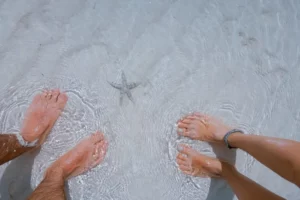What is the cause of heel pain in children?
The most common cause of heel pain in children is Sever’s Disease which affects mainly 7-13 year olds who are very active. The condition is three times more likely to affect boys than girls and is most likely to occur at the beginning of the sports season, concurrent with a growth spurt. Another name for Sever’s is Calcaneal Apophysitis.
Where does it occur?
Pain is usually felt at the back of the heel bones and in 60% of cases affects both sides. The condition is characterised by inflammation of the calcaneal growth plate. The calcaneus is the heel bone. Sometimes there is associated stiffness in the ankle and it can cause limping. Symptoms are often worsened by hard surfaces and wearing old, unsupportive footwear.
What are the symptoms?
Children usually describe soreness at the back of the heel which worsens during and after weight-bearing activity, usually sports related. Pressure to the heel bone area at the base of the achilles tendon is very sensitive to pressure and touch.
What can be done to treat symptoms caused by Sever’s?
As symptoms usually flare up with activity during a growth spurt then activity modification and load management is key to alleviating symptoms. During flare-ups, reducing frequency and intensity of activity along with icing is usually effective in reducing pain. In children with normal foot postures, heel raises and gel heel cups can also be useful in improving symptoms. Ensuring that children are wearing appropriate footwear for their activity with adequate support and cushioning will also help to improve symptoms of Sever’s.
At Active Step we treat a wide range of foot and lower limb conditions for Children. For more information heel pain in children or to book an appointment click here, or alternatively give us a call on 01489 881 204 or send us an email on info@activestep.co.uk, and we’ll be happy to help.
Written by Emily Ball, HCPC Registered Podiatrist, Active Step Health



